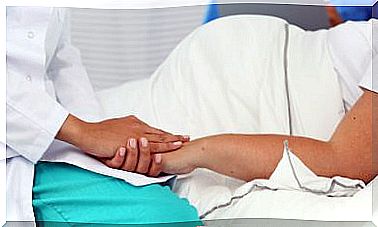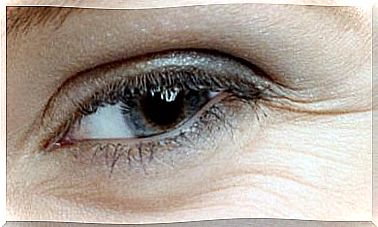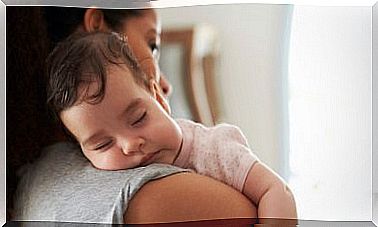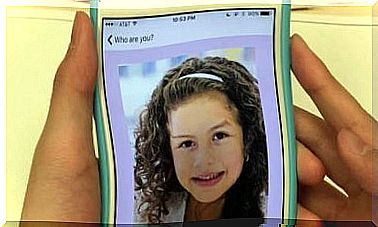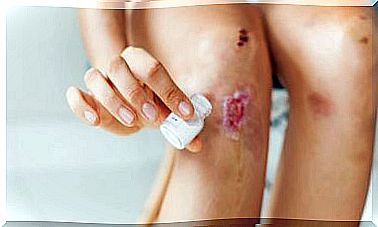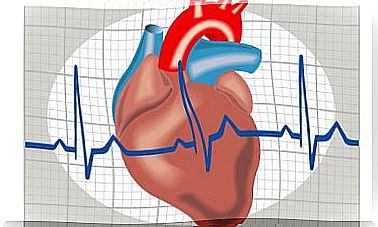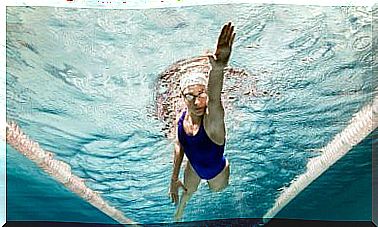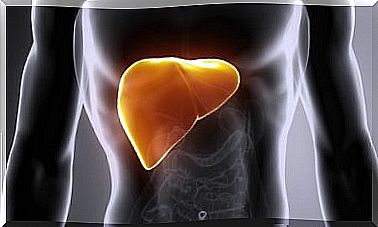How To Treat Atopic Dermatitis In Children
Treatments for atopic dermatitis in children are aimed at reducing symptoms such as irritation and itching of the skin. In addition, their goal is to keep the disease under control and avoid exacerbations.
Atopic dermatitis is a chronic inflammatory disease characterized by flare-ups and remissions that usually last for several months or years. An article published in the Annals of Nutrition or & Metabolism states that around 20% of the pediatric population suffers from this disorder.
Manifestations of atopic dermatitis
The main symptom, which gives a characteristic stamp to atopic dermatitis, is itching. The manifestations vary according to the age of the patient and the chronicity of the lesions. For children, they include the following:
- Xerosis.
- Erythema.
- Edema.
- Escoriaciones y erosiones.
- Suppuration.
- Scabs
- Lichenification of the skin.
Causes of atopic dermatitis
As a review of the literature in the journal Dermatologic Clinics details , atopic dermatitis is caused by multiple interacting factors. They can be genetic, immunological, infectious, environmental, social and psycho-emotional in people who have alterations of the so-called “skin barrier” and of immunity.
In 1989 David Strachan formulated the “hygiene hypothesis” based on the observation that allergic processes, including atopic dermatitis, occurred less frequently in children raised in families with a large number of siblings.
It suggests that the prevalence of atopic dermatitis decreases with early exposure to environmental allergens and non-pathogenic infectious agents. Children with more hygiene would lack potent stimulation of the immune system.
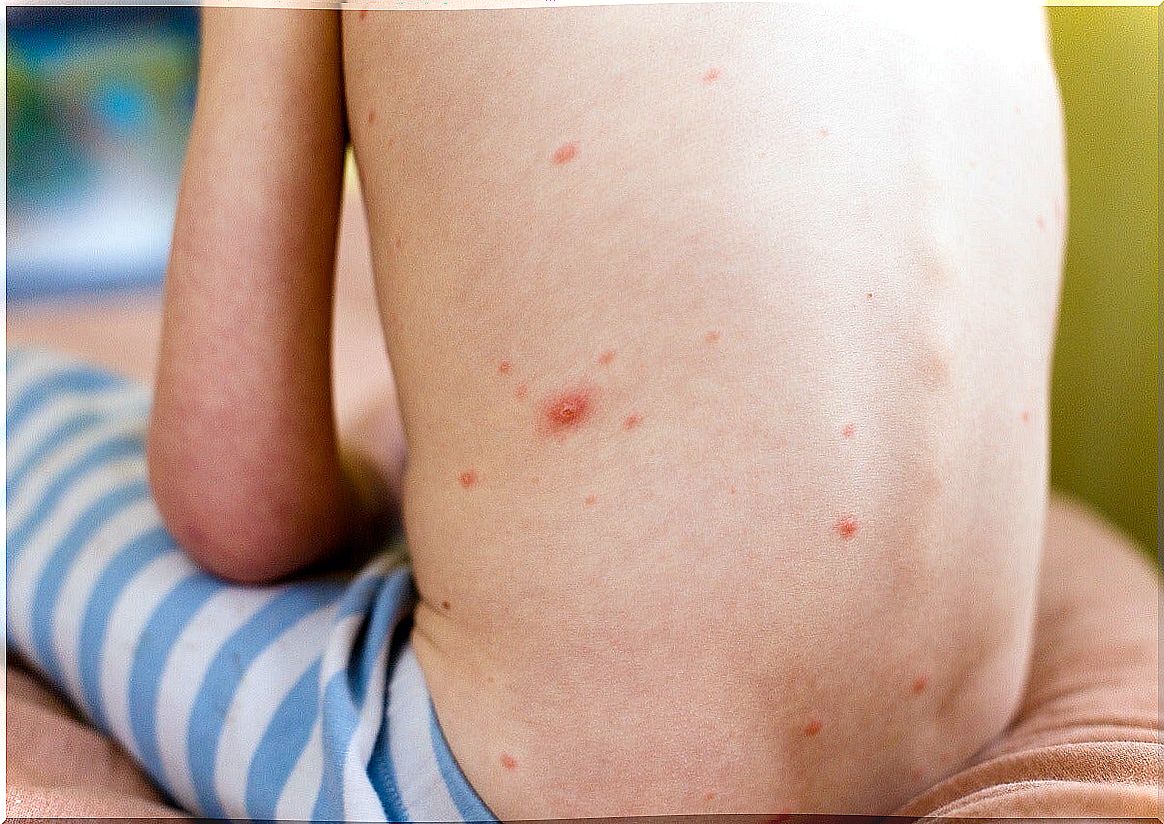
Also read: What is atopic dermatitis?
Recommendations for good management
Children with atopic dermatitis have lost the function of the skin barrier. Consequently, they experience a transepidermal water loss and water retention capacity. In turn, they present a lower amount of ceramides and intraepidermal lipids. How to counteract it?
Bathrooms and hygiene
Taking short daily baths, of no more than 5 minutes with warm water (27-30 ° C), is key to the management of this condition in children. It is important to use neutral pH soap substitutes or creamy soaps.
It is also advisable to add oatmeal mucilage to the bath water, which serves as an adjuvant to hydrate and protect the skin. At the time of drying, the friction of the towel against the skin should be avoided, resting it gently on it.
Once the bath is finished, the use of moisturizers with emollients is recommended, whose formulation favors epidermal moisturization. Also, fingernails should be trimmed and brushed to prevent the child from scratching their skin when scratching.
Moistening
Moisturizing with suitable creams is essential, preferably those that contain lipids, ceramines or essential fatty acids. You can also choose those that contain oats, petroleum jelly or vitamins. These, once applied, significantly reduce dryness.
Food and diet
Although food allergies have an increased prevalence in these patients, current evidence does not recommend the use of exclusion diets routinely. In preschool children, the foods most frequently associated with an exacerbation of atopic dermatitis are milk, eggs, wheat, and soybeans.
Role of probiotics
The exact role of the intestinal flora, as well as the preventive effect of probiotics in the development of the disease, is not yet clarified. Some meta-analyzes have suggested positive effects of probiotics in the prevention of atopic dermatitis, especially in babies who had been administered during the perinatal period.
Identification and elimination of triggers or aggravating factors
As much as possible, it is essential to dress children in cotton clothing and natural fabrics. This allows better absorption of sweat and less incidence of itching. It is also good to wear loose clothing that does not have too much contact with the skin.
On the other hand, it is important to wash clothes before wearing them for the first time. To do this, avoid the use of detergents, bleaches and fabric softeners, which can leave particles that are irritating.
Likewise, direct skin contact with metal clasps, labels, rubber bands, plastic, perfumes and any other substance or element that could trigger an outbreak should be avoided.
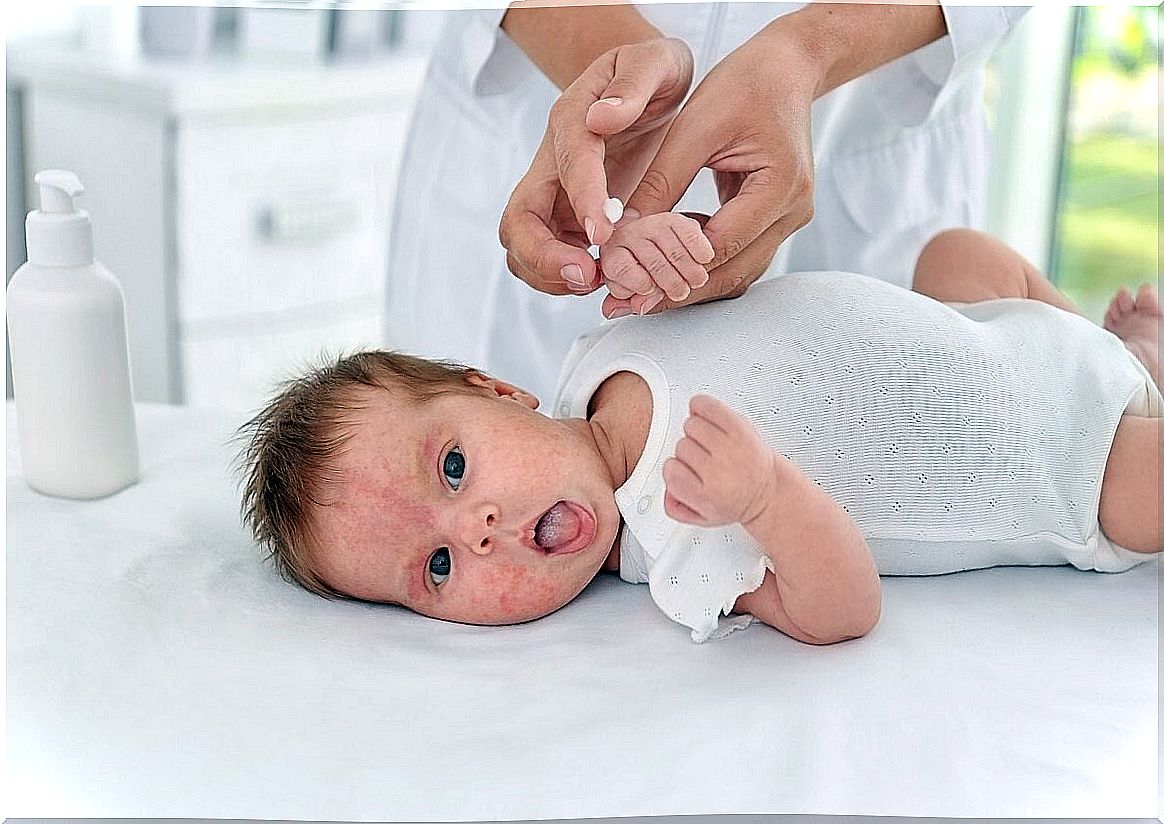
You may be interested: Tips for skin care for babies and children in summer
Medical treatment of atopic dermatitis
During the regrowth phases, the prevailing symptom is itching. The intense itching causes the child to generate lesions that can become infected. Here are the topical and systemic treatments:
- Topical corticosteroids: used during the acute outbreak, 1 or 2 times a day, for a period of no more than 15 days.
- Topical immunomodulators: these are calcineurin inhibitor drugs, the main anti-inflammatory alternative to topical corticosteroids.
- Systemic immunosuppressants: indicated in refractory atopic dermatitis. Potential adverse effects limit its use.
- Intravenous immunoglobulins: in severe forms of this skin disease, it can be a safe and effective drug to control it.
- Phototherapy: broadband UVB phototherapy is the most appropriate treatment as the initial choice in pediatric patients.
- Biological agents: their use is indicated in serious cases.
Treatment of atopic dermatitis in children: what to consider?
The treatment of atopic dermatitis in children requires a complex and individual approach. It is essential to control predisposing factors, such as proper skin care through emollients and correct hygiene habits.
Systemic or topical treatments must be adapted to the extent and severity of the pathology. For this, it is essential to consult a professional in dermatology.
